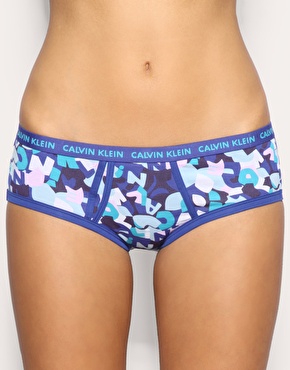What are Pixie Bob Cats? That's what I asked when breeder Sandra Janoski offered to send me information on this fascinating breed. Other than their smarts, there are two main aspects to the appeal of the Pixie Bob.
First, their exotic appearance resembles that of a wild cat. Like the Bengal cats favored by so many, they have a wild appearance. Pixie Bobs are said to be of probable bobcat heritage, and they are bred to look like small bobcats. Some have lynx-tipped ears, giving an even more wild look resembling the lynx.
Although some Pixie Bob Cats have long tails, these are not show quality. The standard in show quality is a short tail. Those that are born without tails are also not show quality, and may resemble the tailless Manx cat bread. One thing to note is that these tail-less Pixies may have trouble with incontinence.
Second, these cats are said to have dog-like personalities. Some hybrid cat breeds that have wild origins retain some undesirable wild traits. This is not so with Pixies, as they are very sweet natured.
Some cats get attached to one human and sometimes shy away from others, while Pixies tend to enjoy everyone's company. If your cat is properly socialized, he will be the life of the party, begging for some attention from anyone who'll give it. Not too surprisingly, their personalities allow for leash training in many cases.
The short haired version of the Pixie Bob Cat is soft and wooly, with longer and denser belly hair. For the longer haired version, the coat is soft and lays a little closer to the body. In both short and long hair versions, the coat is weather resistant and separates easily. The ground color is intensified in hot weather, and cold weather will give a frosted appearance to the coat. Some long haired Pixie Bobs have been bred with Maine Coons, so check with the breeder you choose to be sure of the line.
With respect to coat color, most Pixies are some variety of cream with either red or silver highlights. They may be tabby striped, spotted, marbled, or solid color. Some are even red coated with red spots.
Coat patterns for Pixie Bob Cats include small spots with or without rosettes, with the coat having a "ticked" pattern. Ticking refers to having several colors on each strand of fur. Ticking tends to mute out the spots a bit. Random spotting is preferred in this breed, and the belly must be spotted for show.
Sandra Janoski has been breeding Pixie Bob Cats for 12 years. She gives us some insight into these interesting house cats...
Carol Ann Brewer started the pixie bob breed in 1985 when she got her first cat she called Keba. He was found traveling with a dog in the foot hills of Mt. Baker. He was a big cat at about 17 lbs., with a hock length tail that wagged like a dog, and a very different attitude. Keba became the sire of the breed's namesake, "Pixie". Maggie was the dam to Pixie, who looked very much like the coastal red bobcat. Both Keba and Maggie were very wild in both their looks and temperament. Pixie was the first cat in the breed to be recognized by TICA.
When they meow, it's not quite like your average house cat, being more of a howl. They also use a high chirping tone, depending upon their mood.
Sandra has two cautions about these cats. Feeding them tuna is a mistake, as it can make them very sick. This is something that Sandra learned first hand with her cats. The other caution Sandra has is about vaccinations, "regular shots can kill your Pixie Bob!" What is recommended is either 'the dead virus shots, or homeopathic pills called "Mixed feline nosodes".'
As far as the feet and toes are concerned, Pixie Bob Cats can be "straight footed" or polydactyl (with seven toes maximum for show quality.) A straight footed Pixie has 4 or 5 toes in the front, and 4 in the back. A polydactyl cat is many-toed, which essentially means more toes than "normal." Back feet with more than 4 toes are considered polydactyl, and are sometimes called "rabbit feet."
This fascinating breed, with it's mix of wildness and loving disposition, intelligence, curiosity and athletic skills can make a fantastic pet. If you're ready for it, a Pixie Bob Cat might make a great addition to your home.

 Calvin Klein Perfume Can Be A Style Statement!
Essentially the most light and not quite so lasting is port
Calvin Klein Perfume Can Be A Style Statement!
Essentially the most light and not quite so lasting is port
 Information On Home Residence Security Systems Available In The Market
Do I need a home security system?
To answer this questio
Information On Home Residence Security Systems Available In The Market
Do I need a home security system?
To answer this questio
 Examining Simple Stair Lift Products
The handles and hardware accents usually are crafted from g
Examining Simple Stair Lift Products
The handles and hardware accents usually are crafted from g